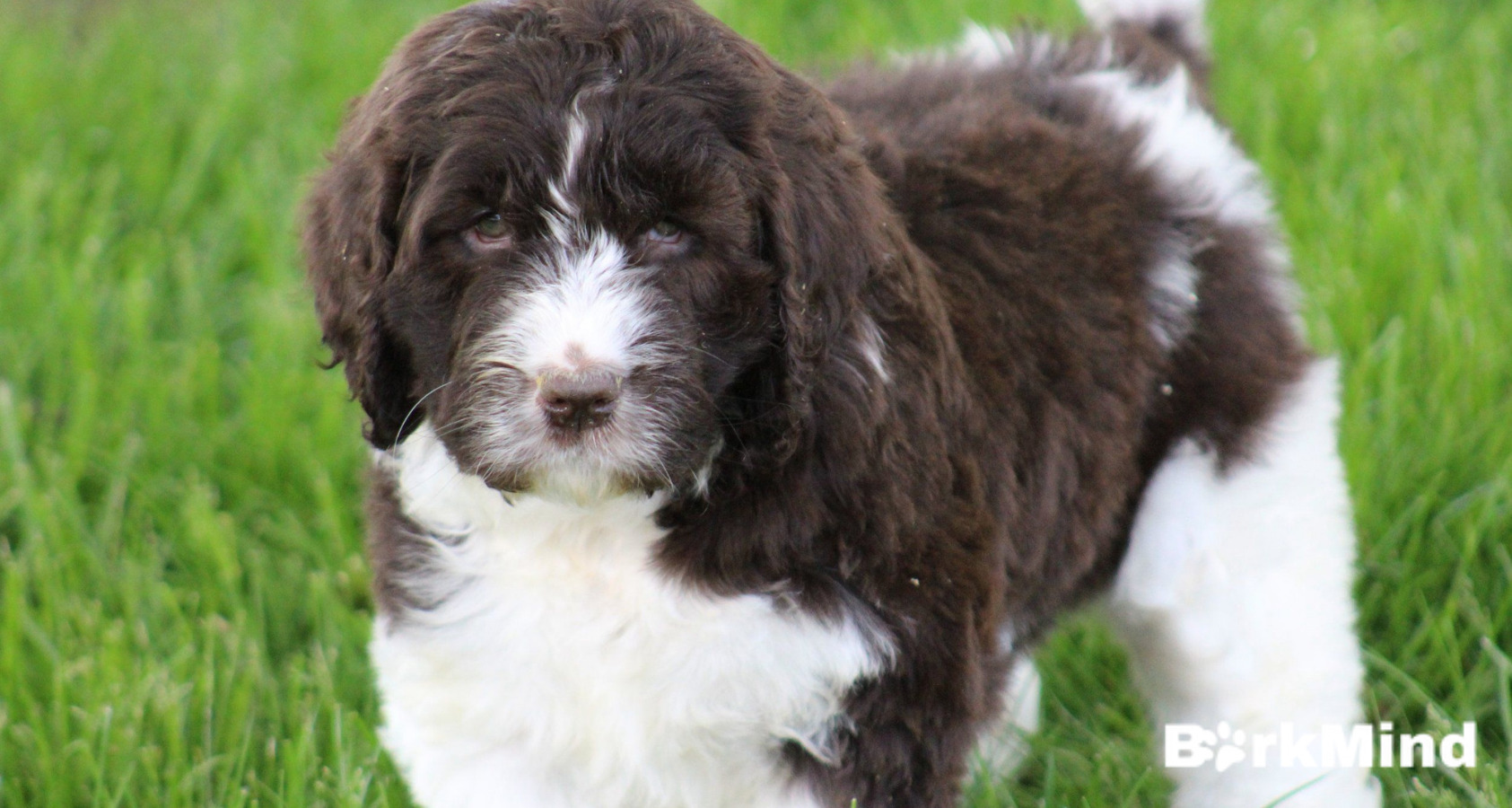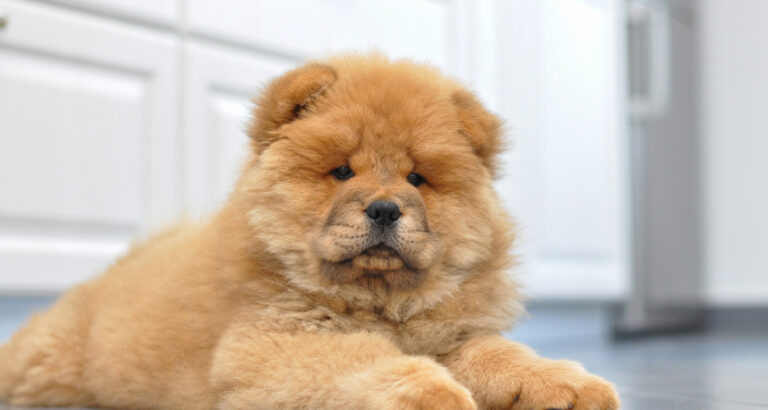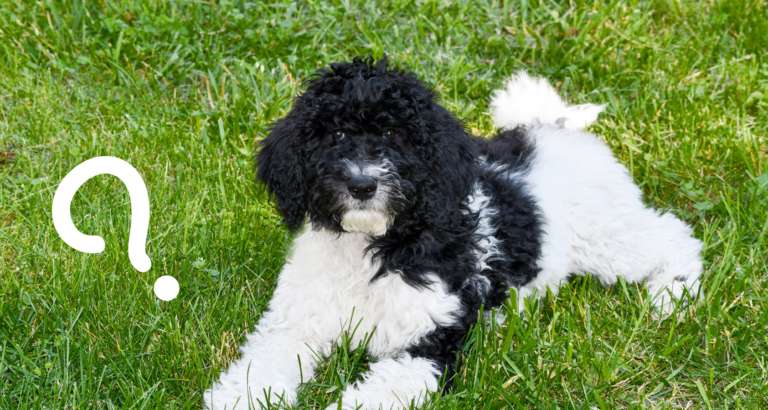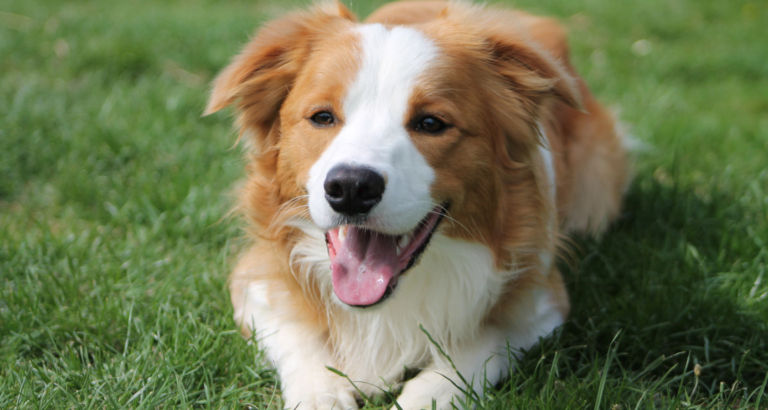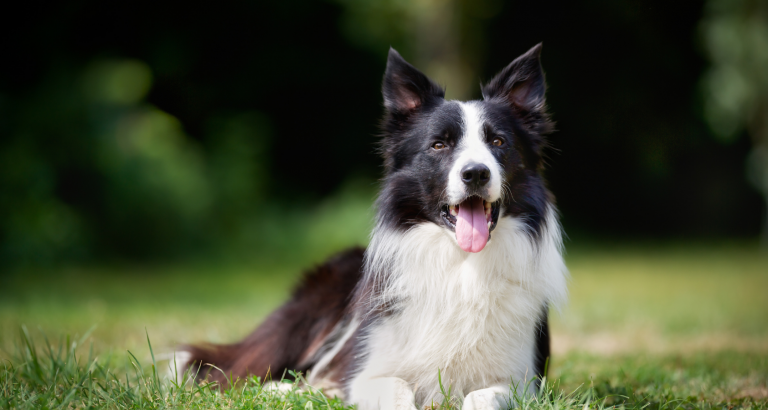Newfiedoodles/Newfypoos – Everything You Need To Know!
Last updated on March 24th, 2024 at 11:05 pm
Reading Time: 14 minutesThis post may contain affiliate links. If you click and buy we may make a commission, at no additional charge to you.
Newfiedoodles and Newfypoos – Everything you need to know
Newfiedoodles are a unique mixed dog breed. Although not so popular as of yet, they have lovable characteristics. Their unique traits and features make them adorable, which is why so many pet owners love them. If you are also looking for a giant family dog, Newfiedoodle is for you.
The Newfiedoodle is a calm, intelligent, and highly active dog breed that could be mini or large in size. These dogs are known for their large size and working habits. They come in a wide range of selection due to their physical features, mostly relating to their hues and size variability. Above all, they don’t require extensive grooming and training.
So, whether you are a first-time pet parent or have a huge family of dogs, a Newfiedoodle will be a great addition to your family, and you will undoubtedly enjoy their company. To make this journey easy for you, we’ve put together a guide on everything about the Newfiedoodle. Below you’ll find what you should know about their unique traits, temperament, grooming, training and learning abilities, and more. Finally, depending on your budget, we’ll tell you how much a Newfypoo puppy costs.
Types of Newfiedoodles Puppies
The Newfiedoodle, also known as Newfypoo, is a combination of a Newfoundland dog and a Standard poodle. Both parents have special characteristics that combine in Newfiedoodles, and that result in a large-sized dog.
Newfiedoodles are a mixed breed, so while you cannot expect many varieties of this breed, they can inherit different features from their parents. The size is the primary factor in terms of variability in this breed, and there are three major types as a result of that:
- Mini Newfypoos – with a weight of 35 to 65 pounds; their height is around 18 to 22 inches at the shoulder.
- Standard Newfiedoodles – with a weight of around 65 to 130 pounds; their height is 22 to 25 inches at the shoulder.
- Large Newfiedoodles – the biggest type of Newfiedoodles can weigh up to 150 pounds and reach a height of 28 inches at the shoulder.
As is the case with other dog breeds, females are slightly smaller than males, so gender largely influences the dimensions of your pet as an adult down the line.
Fun Facts about Newfiedoodles
Having Newfiedoodles is fun, but these interesting facts will even make you closer to your lovely pet.
- The Newfiedoodle is a deliberate cross between the Newfoundland dog, a water-loving giant dog, and a highly intelligent, multi-talented therapy dog, the Poodle.
- Newfypoos were developed to find ducks and other waterfowl for hunting purposes.
- Newfiedoodles have a quick learning ability and exceptional trainability. They’re known as so-called ‘circus dogs’ as they can often be found in the company of street performers.
- They have also worked as service dogs, disabled, emotional therapy dogs, and even assisted police and military officials on different occasions.
- Newfypoos have interesting communication methods, as their vocal or auditory communication includes barking, growling, whining, whimpering, and panting. Similarly, they lick, sniff, or position their tail and ears, gazing at each other. You can also judge their state of mind with their facial expressions.
Newfiedoodles Traits
| Traits | Newfiedoodle | Traits | Newfiedoodle |
| Coat – length | Thick, curly, water-resistant – Medium | Activity | High |
| Colors | Gray, black, brown | Social Needs | Moderate |
| Weight | 35 to 150 pounds | Feeding level | Moderate |
| Height | 18 – 28 inches | Intelligence | High |
| Dog breed type | Family pet as well as a working dog | Grooming level | Moderate |
| Temperament | Friendly, affectionate | Life span | 8 – 12 years |
Newfiedoodles Physical Attributes
There’s one word to describe this mixed dog breed, and it’s adorable. Everyone falls in love with them due to their character. In terms of appearance, they have a thick, curly, and dense coat, which is both oily and water-resistant. This protects Newfypoos against the elements, even in harsh weather conditions. They are also great swimmers, as they take after their parents.
- You can find color variations in a Newfiepoodle’s coat, as it could be gray, brown, black, or other hues. Gray Newfypoos are more silvery when they are born and turn full gray by the time the dog reaches the age of five. The pup’s face and paws turn gray before other body parts. The most popular Newfypoos are those with deep brown or tan coats.
Since many pet owners would love to have a black dog, the good news is that some Newfiedoodles have solid, black bodies, while others can come with black patches on their coat.
- The head of Newfypoo is a mix of Newfoundland and Poodle. Some have thinner, streamlined heads with tapered muzzles, while others have stronger-looking heads and deep muzzles.
- Newfiedoodles have prominent eyes. They can be small to medium-sized and are usually oval-shaped. In terms of color, they can be either dark brown or amber. Darker eyes are more common in this mixed pup breed.
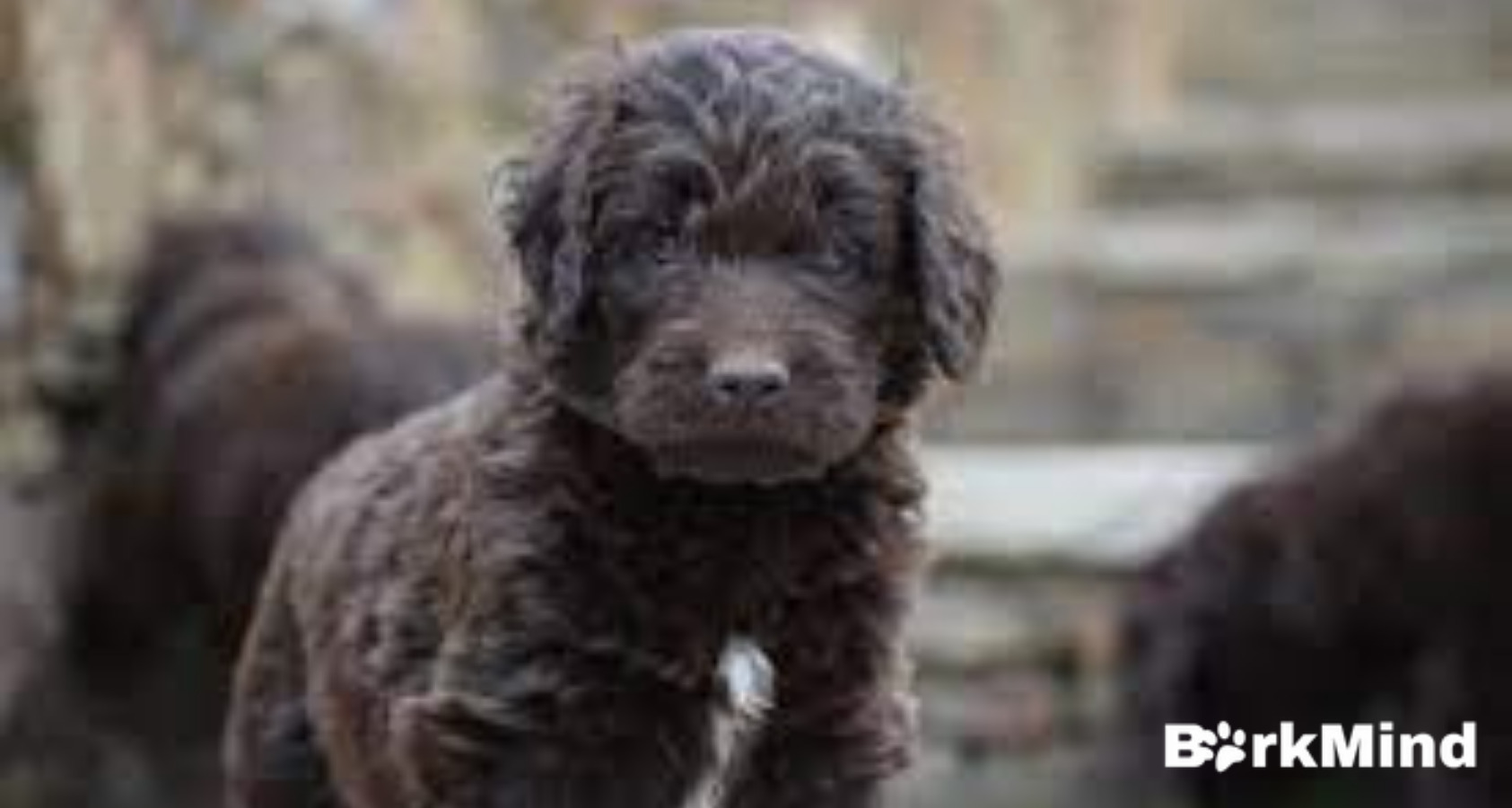
Newfiedoodles Personality
When mixing two dog breeds, there’s always a game of lottery as to which features the puppies are going to inherit from their parents. Luckily for you, the term “Gentle Giant” perfectly applies to Newfiedoodles. Naturally, they can be aggressive if the situation calls for this type of behavior, but their temperament is generally quite mellow.
Newfypoos make great pets for families, including children. Their cute, loving, smart, and gentle behavior makes them ready to handle all sorts of situations. They are loyal to their owners and will try their best to protect them.
They are not shy and act accordingly if conflict with other animals or humans is unavoidable — for protection purposes. They’re extremely protective of their loved ones and quickly respond to any danger. This feature also makes Newfiedoodles perfect watchdogs, and their loud bark can keep your home and family safe. So, if you want an affectionate and protective watchdog, the Newfiedoodle should be your first and last choice.
A Newfypoo gets attached to their owners and spends quality time with kids, playing games and having adventures. Unfortunately, that also means that they’re easily prone to separation anxiety. They don’t do well when they have to spend a lot of time alone, so they might develop destructive behaviors. Spend as much time with your Newfypoo as possible. Take your puppy out for walks two to three times a day and organize indoor play sessions whenever you have some moments available.
Activity
The Newfiedoodle is a very active dog breed packed with energy. Just like any other large dog breed, they love to exercise and require extensive exercise to stay fit and healthy. Their energy requirements make them unsuitable for someone who needs a laid-back lap dog.
If you tend to spend most of your time indoors, a Newfypoo might not be the best dog breed to look at. Hikers, joggers, and people who enjoy regular walks outdoors are, by contrast, the best types of owners for this dog breed. The Newfiedoodle needs at least one hour of walking or running per day to be happy.
Large dogs have special exercise requirements when they are in a growing phase, and extensive jumping can hurt their developing bones and joints. Alternative activities such as truffle hunting or tracking can make enjoyable pastimes for these pups. Above all, Newfies have a natural desire for water sports, which are also great exercises for muscle building without putting unnecessary stress on the joints.
Care and Grooming
Taking care of Newfiedoodle is not a daunting task. Keeping them clean requires little to no effort. All you need is to stick to the following guidelines to keep their good looks and maintain a healthy lifestyle.
- Bathing and Brushing
Newfypoos get curly fur from the Poodle side of the family and an oily coat from their Newfoundland parents. Their dense, curly, and oily coat makes grooming necessary on a regular basis. However, that doesn’t mean you must take your dog to the groomer often; you can handle this task at home.
If your dog has a wooly coat, you need to brush it once or twice a week, give them a good bath once a month, and have their hair trimmed every 12 to 16 weeks. Newfypoos whose coats are dense don’t shed much, which makes grooming even easier.
The more time your Newfiedoodle spends outdoors, the more time you’ll need to spend brushing their coat and giving them a bath. As veterinarians do not recommend bathing your dog more often than once every 30 to 60 days, there are products such as dry powder shampoos that you can utilize to keep your dog’s coat in top shape.
Using a gentle cleaner for their paws and other body extremities that get dirty, especially in the colder season, is the best way of going about things. Stick to your brushing routine as best as possible, as this prevents matting and dirt and debris from accumulating in the Newfiedoodle’s thick coat.
- Nail Trimming
A dog’s nails grow fast, and this means that you must clip them once every three to four weeks. If your dog doesn’t get a lot of physical activity outdoors, which does wear out the nails to some degree, you have to stick to this schedule to prevent them from experiencing pain.
Long nails can do some damage to your dog’s toes, and you can easily tell when it’s time to clip them if you start hearing them on your floors. A nail grinder is a good solution if you don’t want to risk causing minor bleeding, but some nail clippers come with protection guards in case you have to cut more.
- Caring for Your Dog’s Ears and Eyes
To prevent an ear infection, you’ll have to check on your Newfiedoodle’s ears on a regular basis. After all, they have folded or hanging ears (depending on which parents they take after and if they were mixed breed themselves), so they can easily harbor potentially dangerous bacteria.
Eye care mostly refers to your dog’s physical features. Some pups need to have the hair around their eyes trimmed to avoid conditions such as conjunctivitis. Like any other dog breed, some Newfypoos can be born or develop complications such as entropion, which can be corrected only with surgery.
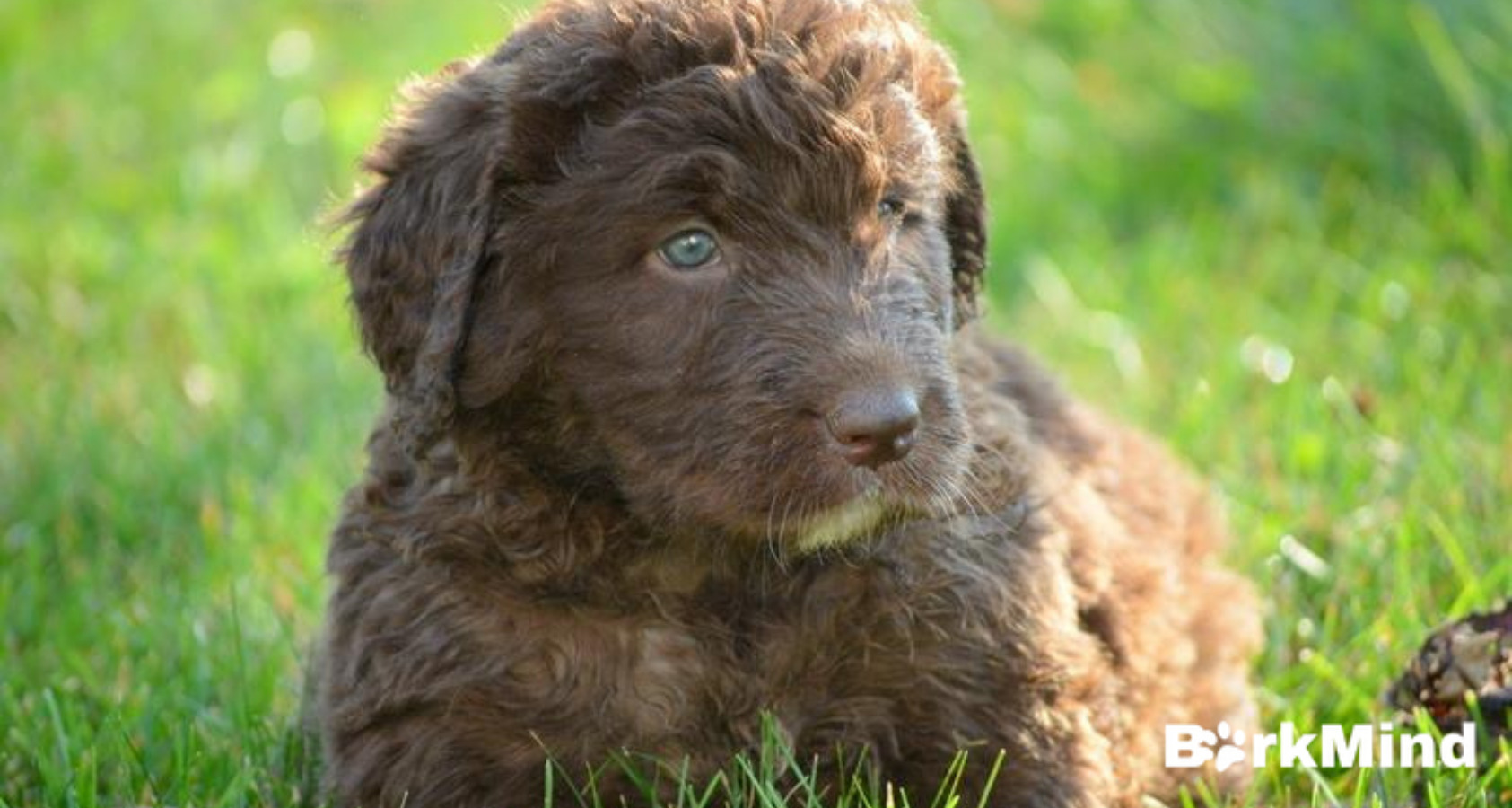
Newfiedoodle Possible Health Concerns
Just like any other mixed dog breed, Newfiedoodles may face some health complications at any stage of their life. While some diseases have clear symptoms and will convince you that it’s time to see the vet, others can go unnoticed for months on end, making the condition more severe.
Here are some major health issues with Newfiedoodles:
Hip Dysplasia
This is one of the most common health concerns of this mixed dog breed. While there’s nothing you can do in the way of preventing it other than getting your puppy from a responsible and reputable breeder, you can ensure that you get your dog tested for it when they reach 6 months of age.
Hip dysplasia can be corrected with surgery, but the operation is more complicated, and the cost is higher if the condition is left untreated for some time. Managing your dog’s weight properly can decrease some of the discomfort they have due to this condition.
Subvalvular Aortic Stenosis
Many large dog breeds are born with this cardiac defect. If it is mild, it generally has no negative consequences on the pet’s health, but it does mean that your dog will not be allowed to engage in strenuous exercise. There are treatments for this heart condition, and depending on how severe it is, they can range from beta blockers for stabilizing the heart’s rhythm to a surgical procedure.
Ask your breeder for a certificate of health according to which the Newfypoo’s parents were not diagnosed with a heart condition before they were used for breeding (at an age of at least 24 months).
Sebaceous Adenitis
Because the Standard Poodle tends to develop sebaceous adenitis, the Newfiedoodle is also prone to it. Overly active sebaceous glands cause the condition, so your puppy’s coat will be unusually oily.
Unfortunately, oily skin is the perfect environment for yeast and other germs, so your vet will advise you on what prevention methods you can ensure to prevent your Newfypoo from developing widespread dermatitis. In terms of clinical signs, irritation and alopecia (hair loss) are common.
Eye Conditions
This mixed breed’s most common ocular disorders are cataracts, glaucoma, and cherry eye. The first two appear as a result of old age and other additional complications, but cherry eye is easily treatable. Another eye condition that you should be wary of, though, is progressive retinal atrophy (PRA), which the Newfypoo can inherit from their Standard Poodle side.
Bloat
Also known as gastric dilatation volvulus, bloat is a life-threatening condition mostly affecting large and giant breeds. The stomach fills with gas and liquid and turns around its own axis, blocking the blood flow and communication between the other parts of the digestive tract.
Newfypoos that drink a lot of water or eat large portions of food are more prone to developing bloat. A dog can lose their life within 30 minutes if they get GDV, so giving your pup several portions throughout the day is better than feeding them one or two large ones.
Newfiedoodles Training
Training a Newfiedoodle is challenging but both interesting and rewarding. Use calm and patience when training your Newfypoo, and don’t expect to see results after just one day. Patience is key, so here are some training techniques to make the process easy.
- Simple Rounds
The Newfypoo is a smart and intelligent dog breed, but their stubborn attitude can give you a bit of a tough time, so you need to start with some basic training steps. Begin training with commands like ‘sit,’ ‘stand,’ ‘stop,’ or similar actions. It will encourage your dog to follow you and be obedient. Avoid forcing or rushing your dog for training. Allow them to sit calmly, as they are a large dog breed, and extensive jumping can injure their hip joints. Make progress with simple training rounds and then progress to the following session.
- Quick Training
Quick training sessions are rewarding for Newfypoos as they often have a short attention span and take your command quickly. The key to quick training is to keep the session short, around five minutes, and do it a few times daily. Fast commands, combined with treats, can do wonders in this sense.
- Reward Sessions
You can start reward training sessions anytime, but remember, do not go opposite to reward and give punishment. Newfypoos love praise and are sensitive to a stern tone. This should be the only type of punishment that you inflict upon your dog — a verbal one. Physical punishment is never a good idea, as it teaches the dog nothing whatsoever and makes them lose their trust in their owners. Reward good behavior with the best treats your dog loves. This type of training is best for leash training and potty training.
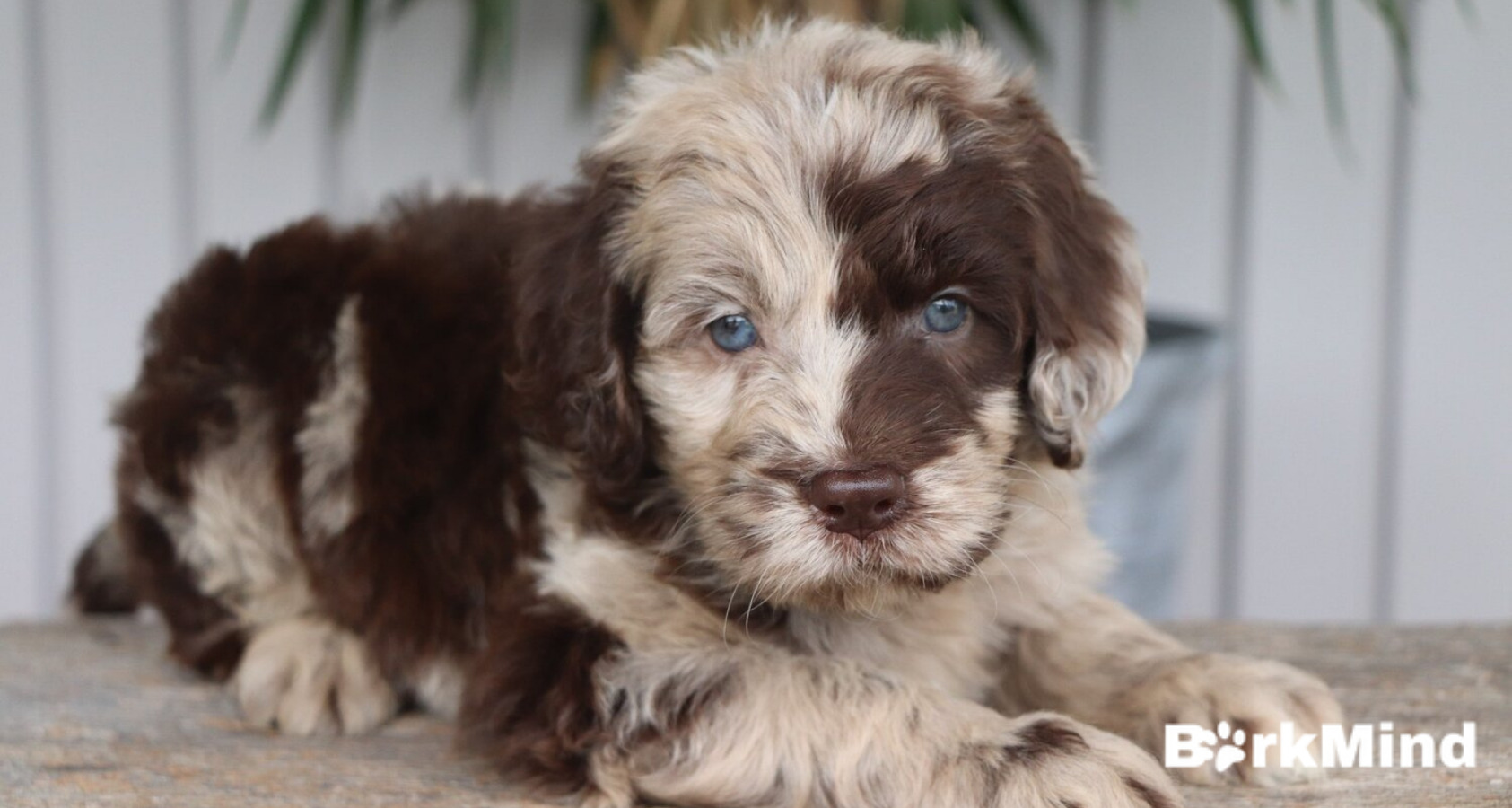
Feeding Requirements
The Newfypoo is an active dog breed, so feeding them enough is essential, but a healthy diet is paramount. At the same time, the nutritional needs of your Newfypoo change throughout his life. For instance, they need a combo of wet and dry food for up to four months during puppyhood. Canine puppy diets specifically designed for large breeds are best until your dog reaches at least 10 to 12 months of age.
Due to their size, they might actually continue growing until they’re 18 months old, so don’t switch to an adult diet just yet. When changing your dog’s food, mix the new one with the old gradually over a period of 10 to 14 days.
Feed your adult dog at least two meals a day and give them vet-recommended supplements such as calcium and phosphorus, along with D3 and omega fatty acids, to prevent bone-related issues.
Life Span
No matter what size of Newfiedoodle you get, the average life expectancy is 8 to 12 years. Many large dog breeds have a lower life span, so it is a considerably good life expectancy for a dog of this size.
A nutritious diet, regular exercise, and proper workouts result in a healthy lifestyle, which could extend your dog’s lifespan. Be mindful of your dog’s habits and keep an eye on their behavior to determine when something changes and you need to consult your vet. Take your dog to the veterinary clinic at least once or twice a year for a check-up — just to stay on top of any secondary health issues you might not be aware of.
How Much Does a Newfiedoodle Cost?
Newfiedoodles aren’t as expensive as some other designer dog breeds, but the least you can expect to pay for a puppy is $300. The average cost is $600 to $1,500, depending on the parents’ health and pedigree and how reputable the breeder is. There can be variations in price based on the color, size, and other features, and if you want to get your pup fully vaccinated and trained, too, that could increase the final cost.
The cost of dog ownership has increased in general over the past few years due to inflation and other factors. Factor in things like feeding, grooming, training with a professional, and veterinary care. Vets can be expensive, so consider getting even the most basic pet insurance to cover some costs and ensure you don’t end up in debt.
Whatever your financial situation is, you should hold off on getting a Newfypoo if your only option is buying it cheaply. While it’s true that amateur breeders exist and that they might not do it on purpose, a very low price can be an indication of irresponsible breeding, where the parents might carry the genes of hereditary conditions.
Conclusion – Newfiedoodles and Newfypoos
The Newfiedoodle is a highly active and intelligent dog breed resulting from Newfoundland and Poodle cross-breeding. These dogs are great family pets and socialize well with anyone without being frightened or wary of children or adults. As puppies, they need some amount of socialization to ensure that they’re comfortable with other humans and animals. Overall, they love the outdoors and exercising, so they make wonderful pets for active people.
Newfypoos are prone to conditions like hip dysplasia and progressive retinal atrophy, so buy your pup from a responsible breeder. Meet your puppy’s parents, see how they interact, and check the record of the parents’ lineage. Don’t forego vet check-ups twice a year to ensure that your dog remains as healthy as possible for as long as possible.
Resources:
1. Progressive Retinal Atrophy, Cornell Richard P. Riney Canine Health Center, https://www.vet.cornell.edu/departments-centers-and-institutes/riney-canine-health-center/canine-health-information/progressive-retinal-atrophy
2. Incidence of and breed-related risk factors for gastric dilatation-volvulus in dogs, L.T. Glickman et al, 2000: https://pubmed.ncbi.nlm.nih.gov/10638316/
3. Long-term genetic selection reduced prevalence of hip and elbow dysplasia in 60 dog breeds, A.M. Oberbauer et al, 2017: https://www.ncbi.nlm.nih.gov/pmc/articles/PMC5325577/
4. Canine sebaceous adenitis, Charlie Pye, 2021: https://www.ncbi.nlm.nih.gov/pmc/articles/PMC7877684/#:~:text=Sebaceous%20adenitis%20destroys%20the%20sebaceous,shafts%2C%20eventually%20leading%20to%20alopecia.5. The genetics of eye disorders in the dog, Cathryn S. Mellersh, 2014: https://www.ncbi.nlm.nih.gov/pmc/articles/PMC4574392/

